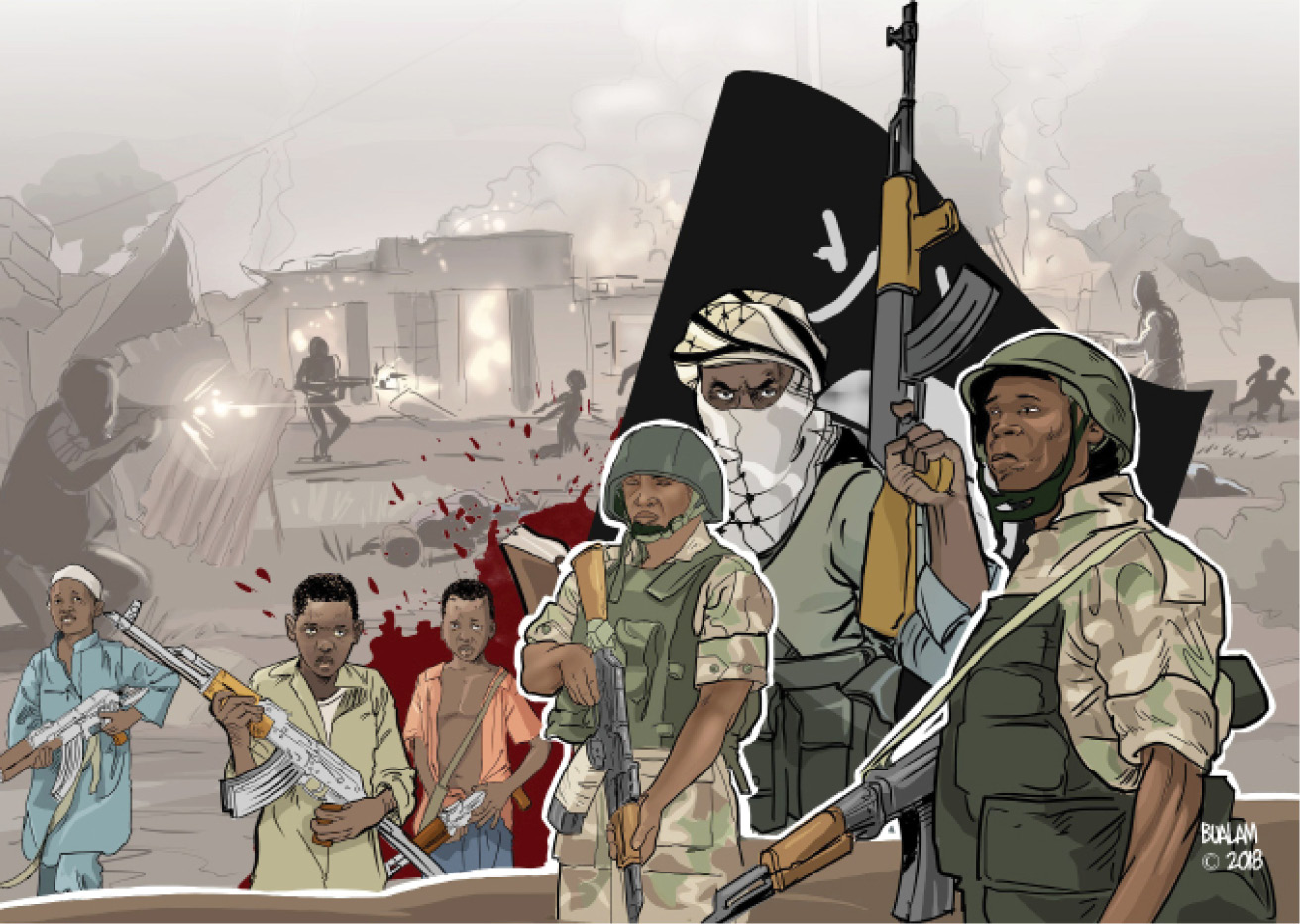Everything has a cost. And the reign of terror that has gripped most parts of northern Nigeria over the past decade or so has its costs too. Not often have we tried to measure by ourselves, in part or in whole, what the costs of the various forms of terrorism in the North are to the trajectory of development in the region, let alone to have reasoned conversations about them. But we must.
This past Saturday, Daily Trust led with a story on how communities throughout the region are battling to keep children in school in the midst of not only Boko Haram/ISWAP terrorism in the North East, but also the now even more strident banditry in the North West and parts of the North Central. That is one story I personally expected would stir up serious conversation about what to do across the region, and indeed, the country.
More directly, I expected the story to elicit emergency meetings for action not only across the Government Houses of the 19 northern states and their collective body, the Northern Governors Forum, but also in the presidency where the present occupant has benefited more than most from northern votes, and precisely because people thought he could help solve these very problems. If those meetings have not yet been slated or held, they should because the challenges which the story vividly illustrated are more than scary, and would not go away on their own.
According to the story, some 2,295 teachers have been killed in northern Nigeria in the past nine years, while 1,893 students have been abducted in 15 raids on schools across seven states of the region. Let that sink in for a moment. What does it mean, for the sake of analysis, to have 2,295 teachers killed needlessly? What does it mean to subject schools to unending raids by kidnappers and bandits? Both are questions of social development in a region that already lagged behind the rest of the country in education and other indices of development even without these additional challenges.
It costs a minimum of 15 years to train a single teacher up to at least the level of the National Certificate of Education (NCE). That means the killing of 2,295 teachers in nine years has cost the region some 34,425 years of learning combined, or 3,825 years of learning per year. Moreover, even though education is largely free for parents and students across all levels in the country, it does cost governments at local, state and the federal levels huge sums in annual budgets.
I have no statistic to cite, but we can reasonably estimate that it will cost the government (at all levels combined) at least three million naira to provide 15 years of education up to the NCE level per person, given the costs of paying teachers, building and maintaining classrooms, hostels, providing furniture, books and so on, even at a barest level of provision of these educational inputs. Therefore, having 2,295 teachers killed means, by this rough estimate, the region has lost investments in education totaling some N11,475,000,000 in monetary terms.
Of course, we might think that this is small, but it is probable that the late Premier of Northern Nigeria, Ahmadu Bello, did not have that much money for the entirety of the development projects he initiated throughout his 10 or so years as premier. So, it matters. But what about the personal investments lost to the individual teachers and their families? What about the inestimable knowledge and skills they would have imparted to the next generation? What about all the contributions they could have made to their communities and the local economy from their income, energy or wisdom?
The point, therefore, is that while the value of a single teacher cannot be measured in monetary terms or any form of numbers, we must yet try to do this, because without such quantitative estimates all would seem normal in the North, even as society rapidly retrogresses. The raids on schools are a good example of this point. While there have been 15 raids on schools, the damage done to educational development, in the North would be incalculable, but we must try to put a figure on it, if to have some meaningful grasp of what is amiss.
The abductions have depressed school attendance figures in many states, since many schools have been shut in the first place. But they have also depressed new school enrolment because a shut school cannot enrol anyone, and in any case, why bother? So, while 1,893 school children have been abducted from 15 schools, the real impact is likely to truncate the education of hundreds of thousands of children in a region that is home to about 65 per cent of Nigeria’s 13 million out-of-school children—the highest in the world—and where, even many of the abductors should be in school themselves, or at least should have been.
In other words, even were the will and the resources to be found in the North today, it will take many years to recover from the shocks of the manpower lost and declining attendance and enrolment figures in this critical sector. But what about the impact of these conflicts, not just on education, but on the overall social and economic development of the North?
A few months ago, the UNDP in collaboration with the Frederick S. Pardee Center for International Futures of the University of Denver published a study on “Assessing the impact of conflict on development in North East Nigeria”. I was part of a technical meeting to review the work sometime last year, and struggled to hold off tears when the figures were being rolled out by the team. First, for every person killed directly in the conflict in the North East since 2009, nine others died indirectly as a result. So while 35,000 people have been killed directly in the northeast situation, total deaths is 10 times that number: 350,000.
Moreover, if the current trends continue, the study warns, total deaths in the North East will rise to 1.1 million people by 2030. The International Futures model is unique in that it provides data about the impact of conflict on several development indicators by simulating data for the actual conditions of conflict and the counterfactual conditions of no-conflict. In other words, to understand the developmental impacts of terrorism in the three states of the North East most affected, one needs to have an idea of where they would be developmentally without the conflict. This thus takes cognisance of both the direct and indirect effects of the conflict, as seen with the death already mentioned.
I will surely try bring out the core details of this study someday, but for now, its stark conclusion is worth noting. On such indices of development as sub-regional GDP, extreme poverty, number of years of education, among others, the study shows, the states of the North East are unlikely to return to pre-conflict (2008) levels, even assuming the conflict ended today. Of course, the conflict has not yet ended. But worse, a similar thing can be said about the situation in the North West and beyond. So unless we want to create even more terrorists of the future, this is the time to start rolling back the damage of the past 10 years of terror.

 Join Daily Trust WhatsApp Community For Quick Access To News and Happenings Around You.
Join Daily Trust WhatsApp Community For Quick Access To News and Happenings Around You.


